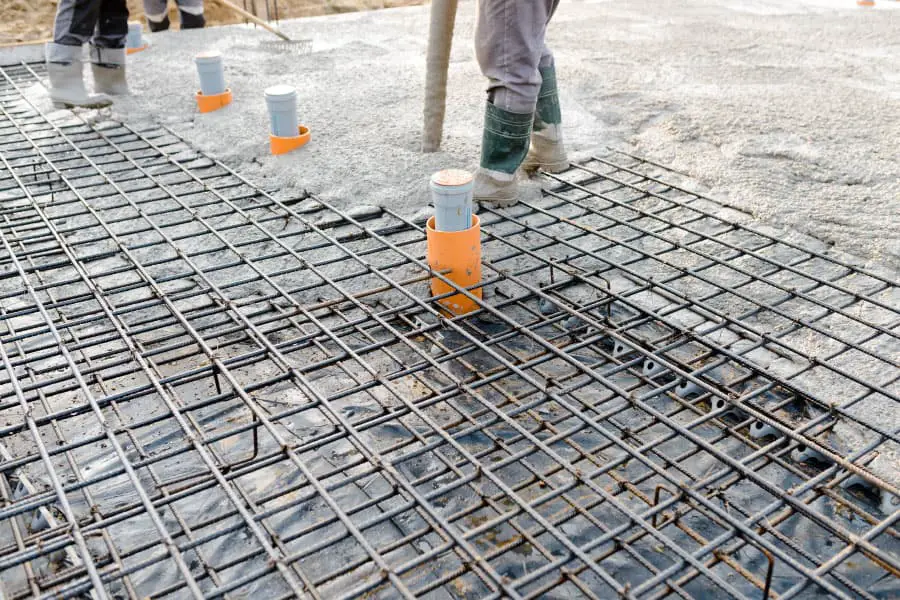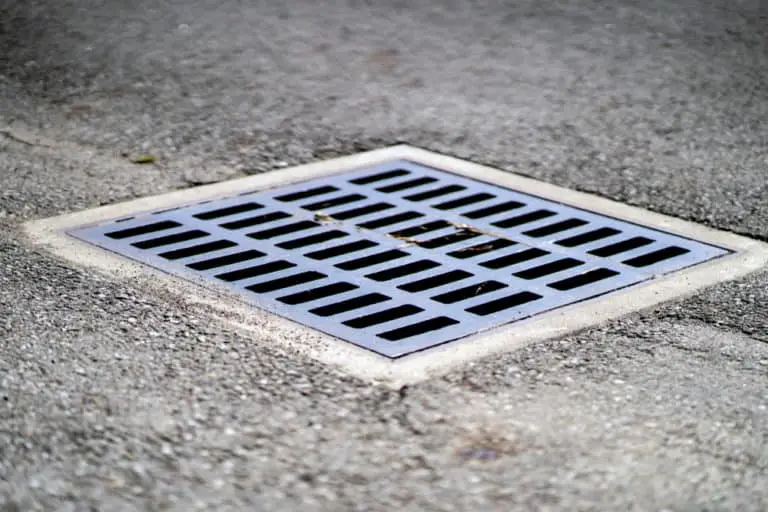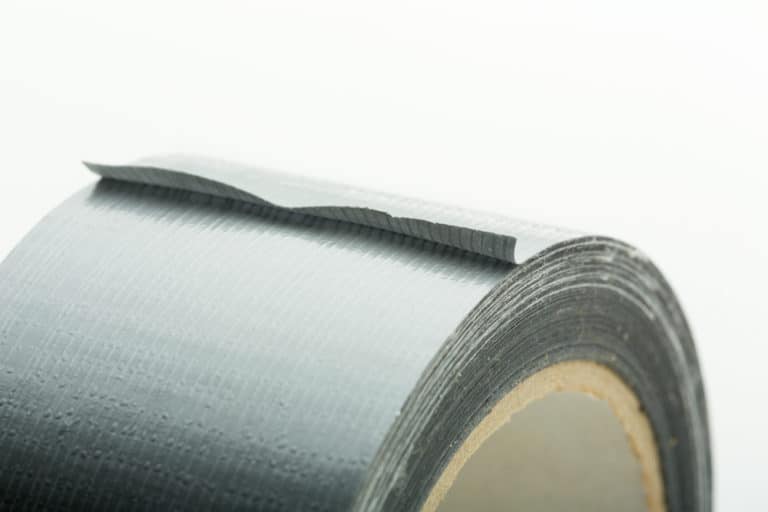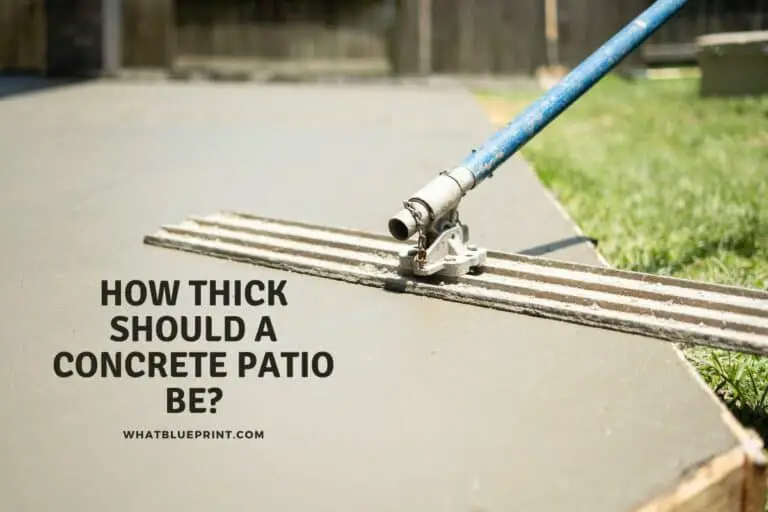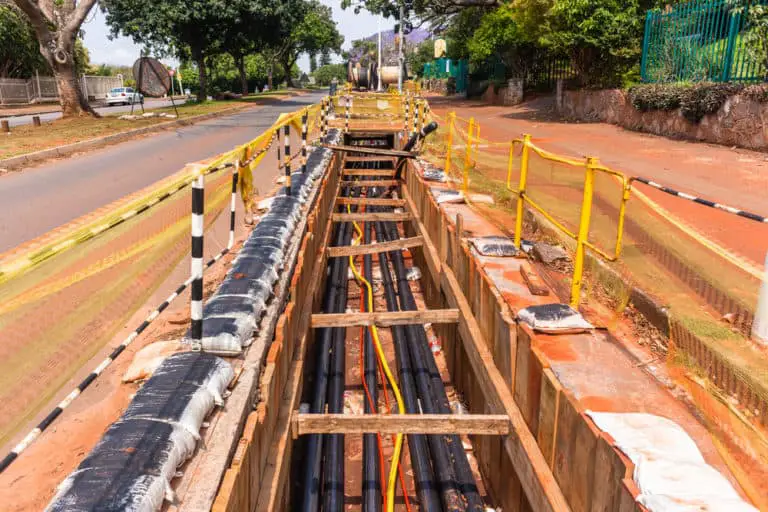Can Pipes Freeze in a Slab Foundation?
Pipe freezing is a major concern, especially and locations that experience extreme weather. A slab foundation is a popular foundation used because it is cost-efficient and can be built easily. It’s not uncommon for homeowners to opt for a slab foundation in places with winter. With this in mind, is it possible for a pipe to freeze in a slab foundation?
Yes, the pipes underneath your house can freeze if the house is built on a slab foundation. Unlike basement-type or crawlspace-type foundations, a slab foundation makes accessing utilities difficult because the utilities will be encased in concrete. Even if the pipe is fully encased in concrete, it can still freeze due to the permafrost and low temperature.
In this article, we will be going more into slab foundations, types of pipes, and how to prevent your pipes from freezing, and what to do if you have a frozen pipe.
What is a slab foundation
A slab foundation is a concrete slab laid down on top of reinforced soil. The slab foundation is often used in locations that do not experience extreme weather changes such as tropical countries, for example. The reason for this is because of how extreme weather, such as winter, can possibly damage fixtures.
This is inconvenient if you have a slab foundation because fixtures are harder to access compared to other foundation types, namely, crawl-space foundations and basement foundations.
What are pipes made out of?
Pipes are mainly made out of three materials, which are Steel, Copper, and Plastic.
Here is a brief look at the pros and cons of each material:
| Material | Pros | Cons |
| Steel | – Recyclable – Strong – Less support needed Durable. | – Corrosive – Heavy – Expensive – Low conductivity |
| Copper | – Corrosion – Resistant – Relatively lightweight for its durability and strength – Environment-friendly | – Vulnerable to certain PH levels of water – May add a metallic taste to water |
| Plastic | – Lightweight – Flexible – Easiest to install – Affordable – Less amount of water friction. | – Can melt if exposed to high temperatures. – Bulky – More vulnerable – Not environment-friendly |
The most economical material among the three is plastic. PVC is the main type of plastic used in plumbing. Properties of PVC may allow it to expand if put under extreme pressure; however, the freezing temperature will make the plastic brittle and vulnerable.
What to do if you have a frozen pipe
The first and most important step to repairing a broken pipe is to stop the water running through the pipe. In order to do this, you need to know where the gate valve for the broken pipe is located.
Since you have a slab foundation, it will be challenging to find the location of a broken pipe. A leaking pipe will only be noticeable in a slab foundation type if the damage is already severe.
You would need the hire a repairman to find the location of the broken pipe if you suspect that your water bill is irregular due to a broken pipe. The repairman would then break through the concrete, using the plumbing plans as a basis, and they will either mend the pipe or completely replace it depending on the severity of the damage.
When do you live with broken plumbing fixtures, it’s best to ensure that the area in which the leak is occurring is properly ventilated, especially if you have materials in the nearby area. You also have to ensure that no electrical fixtures will get into contact with the water from a leaking pipe.
How to prevent pipes from freezing
Here’s how to prevent your pipes from freezing:
- Insulate your pipes. Discuss the possibility of adding this feature with the architect and the contractor while the house is being built to ensure that the temperature around the pipes does not go low enough to cause freezing.
- Ensure that your home is always at a temperature that pipes can not freeze in. Water freezes at 0 degrees celsius. A pipe will freeze if the temperature is around 5 to 10 degrees celsius. To regulate your house temperature, aside from using a heater, what you can do is to make sure that cold air leaves the house and warm air enters it by always setting your thermostat to the appropriate temperature.
- Always allow a little bit of water to go through the pipe at all times. In most cases running water will not freeze compared to still water. However, if the pipe manages to freeze, make sure to turn off the water to ensure that pressure does not build up inside the pipe.
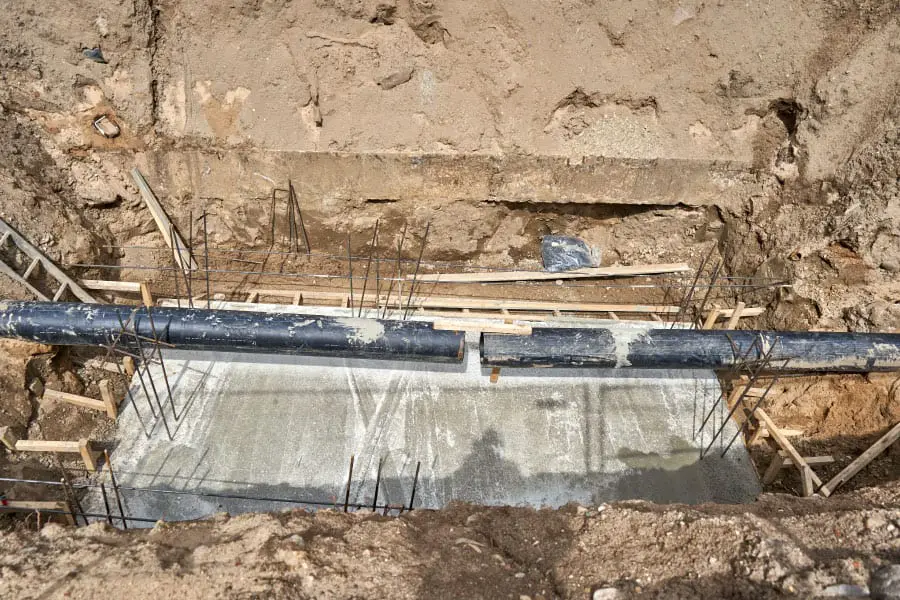
What to do if my pipes are already frozen?
If the pipe is frozen but undamaged do the following:
- Ensure that normal water pressure is restored to the frozen pipe. The best way you can achieve this is by applying heat to the frozen area of the pipe as well as allowing water to run through the pipe. The friction of the water, as well as the applied hot temperature, will cause the ice to melt faster inside the pipe.
If the pipe is frozen and has burst, do the following:
- Turn off the water flow through that pipe immediately. As a homeowner, take the precautionary measure by learning which gate vault closes which pipe. The architect and the master plumber usually plan the water system in your home in such a way that it can still function with a disconnected pipe.
Advantages and disadvantages of a slab foundation type
Aside from what was mentioned earlier in the article, there are numerous advantages and disadvantages to having a slab foundation. It’s essential to take this into account so that you can get the full picture of what you need to look out for if you have this type of foundation.
Here are the advantages and disadvantages of a slab foundation
| Advantages | Disadvantages |
| – Immune to flooding | – Cracking may occur – If not constructed properly, a crack on the slab foundation compromises the structural integrity of the entire building |
| – Pest-proof | – Pests are more likely to enter through walls |
| – Fewer stair steps needed (due to lower elevation) | – Insulation will be REQUIRED if you live in a country that experiences low temperatures |
| – Affordable (Compared to other foundation types) | – Doesn’t provide any extra space (Compared to other foundation types) |
How are pipes installed in a slab foundation?
- Pipes are laid out on top of reinforced soil. Pipes are divided into two categories, namely the water lines and the sewer lines.
- Sand or gravel is poured to cover the pipes.
- Concrete is then poured to form the slab.
How to insulate a slab foundation
Frost walls, as the name implies, are walls that provide insulation around the perimeter of a foundation. In certain locations, frost walls are required to protect the structural integrity of the building.
The design of the frost wall is to keep the ground below the slab foundation from freezing by taking advantage of geothermal heat underneath.
Architects design the building in such a way that allows heat to radiate to the ground below and, at the same time, prevents cold air from freezing the ground.
Conclusion
Pipe freezing may be more common and much more of a hassle if you have a slab foundation; however, with proper design and construction, all of that can be avoided. It may be more expensive at the start, but the investment will save you from future headaches and spending.

